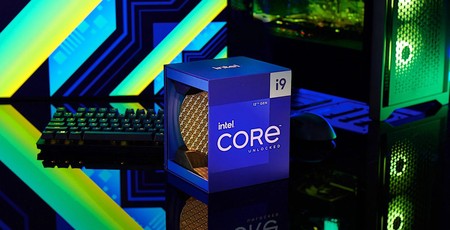Intel launched its first six Alder Lake-S processors on Wednesday evening. The SKUs forming the initial roaster of 12th gen Intel Core processors can be found detailed below in a table. Briefly, they are the Intel Core i9-12900K/KF, the Intel Core i7-12700K/KF, and the Intel Core i5-12600K/KF. From the suffixes, seasoned Bit-Tech-ies will know these are all multiplier unlocked CPUs for enthusiasts, with the ‘KF’ chips sold with iGPUs that have been rendered incommunicado.
Highlights of the first ‘Intel 7’ process product launch were basically the things we were left wanting after the Intel Architecture Day back in August – specific launch SKU information, a smattering of benchmarks, and some input from Intel partners regarding the first 600-series motherboards, and DDR5 RAM kits. We have all that now, but Intel won’t let third-party reviews be published until CPUs and PCs are available to the public, starting from 4th November.
Above you can see all the new SKUs. You can see the mix of P- and E-cores, base, and turbo frequencies, as well as caches and so on. Important new stuff in this table includes the Processor Base Power and Maximum Turbo Power. You can disregard the smaller wattage figure, as all the enthusiast motherboards will be running the new CPUs at the higher power limit shown to make the most of their potential.
Considering the top-end Intel Core i9-12900K to get a handle on the potential of these 12th gen Core processor offerings, Intel says that this chip is the “world’s best gaming processor”. It features 16 cores and 24 threads and runs at up to 5.2GHz – but in your high-end cooler packing rig it will be scoffing over 240W when under heavy loads.
At the event yesterday evening, Intel showed some of its own test results, demonstrated “leadership gaming”. You can see the chart it shared directly above, which suggests that the Intel i9-12900K is about 12 per cent faster than the AMD Ryzen 9 5950X in modern PC gaming. Sadly, it appears to be the case that Intel’s Windows 11 systems haven’t been updated with the AMD/Microsoft patches to get AMD’s L3 caching and ‘preferred core technology’ working as it should. Remember that these issues could slow gaming on AMD platforms by as much as 15 per cent.
Intel claimed better advances in content creation vs its own previous gen flagship CPUs. In these processor intensive use cases, the 12th gen CPUs were at least a third faster than their 11th gen ancestors. Of course, the greater core counts, and creative multicore loving apps will have been instrumental in these uplifts.
For your interest, I’ve embedded a comparison Intel i9-12900K die shot below, as shared by Der8auer. You can also check out some fancy wafer and die shots courtesy of HardwareLuxx editor Andreas Schilling on Twitter.
Word on the street is that the flagship Core i9-12900K will be priced at US$590, the Core i7-12700K will be $410, and the Core i5-12600K will be $290.
Intel introduced the all-new 600 Series chipsets alongside the new processors. For the enthusiast level desktop processors, it has aptly allowed partners like Asus, Gigabyte, and MSI to launch motherboards based around the Z690 chipset. The new motherboards provide advanced and modern I/O technologies such as PCIe 5.0, DDR5 (usually), fast integrated wired and wireless networking, and more, as standard.
Oodles of new motherboards have been revealed, for example Asus alone has nineteen Z690 models spanning all sorts of capabilities and sizes (E-ATX, ATX, mATX and mini-ITX) prepared. The likes of Aorus, and G.Skill are boasting about their new DDR5 memory modules, too.

